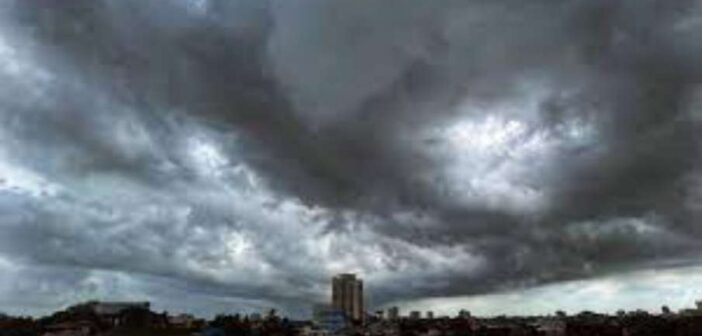(HT)
Monsoon rainfall during June to September, over the country is likely to be “above normal” at 105% of LPA with a model error of ± 5%, India Meteorological Department said in its long range forecast on Tuesday.
Last week, private met forecaster, Skymet Weather had forecast a “normal” monsoon at about 102% of the long period average (LPA), with an error margin of 5%.
Last year monsoon was “above normal” at 108% of its long period average (LPA). In 2023, an El Nino year, IMD had predicted “normal” monsoon at 96% of LPA, but actual rainfall was below normal at 94%—still within the agency’s error margin.
The LPA for the season over the country as a whole for the period 1971-2020 is 87 cm. All conditions are favourable for a bountiful monsoon, officials said, particularly the absence of El Nino which often has a hostile influence on the monsoon and low snow over the northern hemisphere which favours good monsoon rains.
Currently, Neutral El Nino-Southern Oscillation (ENSO) conditions are prevailing over the equatorial Pacific region. However, the atmospheric Circulation features are similar to La Nina conditions. The latest Monsoon Mission Climate Forecast System (MMCFS) as well as other climate model forecasts indicate that the Neutral ENSO condition are likely to continue during the monsoon season.
At present, neutral Indian Ocean Dipole (IOD) conditions are present over the Indian Ocean and the latest Climate models forecast indicates that the Neutral IOD conditions are likely to continue during the southwest monsoon season. Further, the snow cover areas of northern hemisphere and Eurasia during the last three months (January to March) were below normal. The winter and spring snow cover extent over Northern Hemisphere as well as Eurasia has in general an inverse relationship with the subsequent Indian summer monsoon rainfall, IMD said.
“Monsoon has a negative relationship with snow cover. Higher the snow cover area less is the rainfall. This is because higher snow cover means colder landmass. Cold landmass will lead to a weak monsoon current because monsoon is nothing but cross equitorial flow of wind,” explained M Mohapatra, director general, IMD. The snow cover over Himalayas is also low this year leading to early heating, officials said.
According to IMD, there is a 33% chance of “above normal” monsoon (105 to 110% of LPA); 17% chance of “excess” monsoon (>110%); 30% chance of a “normal” monsoon (96 to 104%); 17% chance of a “below normal” monsoon (90 to 95%) and 16% probability of a “deficient” monsoon (>90%).
The spatial distribution suggests above-normal seasonal rainfall is very likely over most parts of the country except some areas over Northwest India especially Jammu and Kashmir, Northeast India, parts of east India especially Bihar and South Peninsular India particularly Tamil Nadu, where below-normal rainfall is likely.
Since 2003, IMD has been issuing the operational long-range forecast (LRF) for the southwest monsoon seasonal (June to September) rainfall averaged over the country as a whole in two stages. The first stage forecast is issued in April and the second stage or updated forecast is issued by the end of May. In 2021, IMD has implemented a new strategy for issuing monthly and seasonal operational forecasts for the southwest monsoon rainfall over the country by modifying the existing two stage forecasting strategy. The new strategy uses both dynamical and statistical forecasting system. Multi-Model Ensemble (MME) forecasting system based on coupled global climate models (CGCMs) from different global climate prediction centres, including IMD’s Monsoon Mission Climate Forecast System (MMCFS) are used.
Monsoon delivers nearly 70% of India’s annual rainfall and remains vital for the economy. About 51% of India’s farmed area, accounting for 40% of agricultural production, is rain-fed, with 47% of the population dependent on agriculture for livelihood.
Consistent and moderate amounts of rain – as opposed to heavy or very heavy rainfall days – is crucial for a country where nearly half of the farmland lacks irrigation. Good rains can help keep prices of staples such as sugar, pulses, rice and vegetables under control, in turn restraining the sticky inflation problem.
When asked as to why northeast India has been recording below normal rains during the past several monsoons, M Ravichandran, secretary, ministry of earth sciences explained that during the past one decade we are seeing the west-east dipole change. The Thar desert region traditionally arid is recording more rain while northeast which traditionally records good rainfall is seeing a minor reduction in rainfall quantum.
Responding to a question on whether Trump administration’s proposal to drastically slash funding to National Oceanic and Atmospheric Administration will impact forecasting in India, Ravichandran said IMD depends on an ocean-atmosphere coupled model so ocean observations that NOAA carries out are critical. “Globally, 50% of the ocean observations are funded by US, so in the long run we will see an impact on forecasting,” he said.





